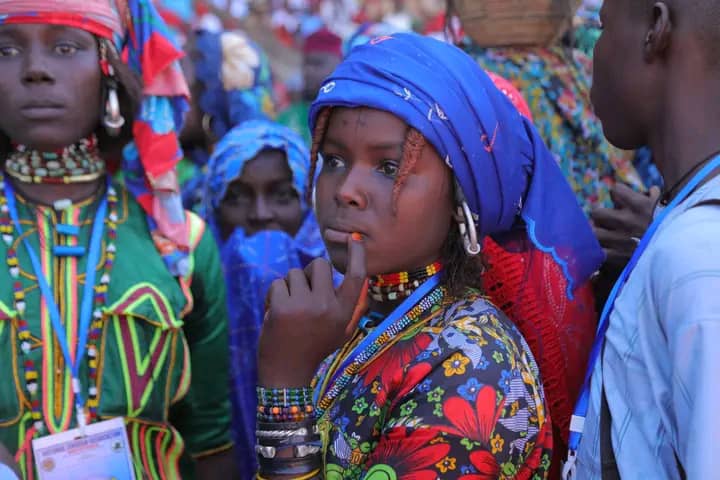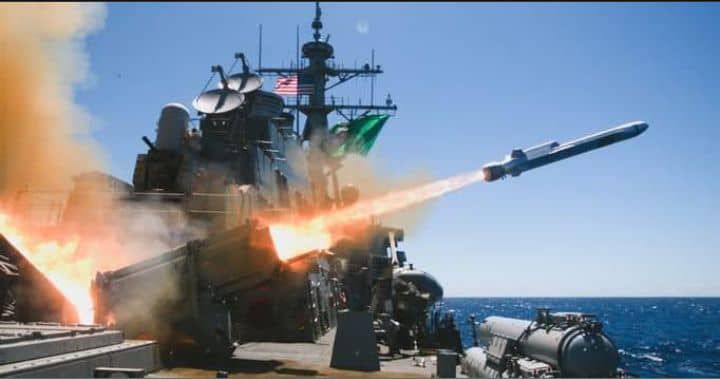Counterinsurgency expert thinks that having former fighters working with the military – giving them motorbikes and AK-47 rifles – might be ‘too soon’.
Gado was 22 years old when he joined Jamā’at Ahl as-Sunnah lid-Da’way Wa’l-Jihād (JAS) in 2013.
He took part in almost all the major battles against the military, later rising to the rank of “Qa’id” – a war commander – until he surrendered to the Nigerian military two years ago.
After quitting the sect, the former JAS fighter is now working side by side with the military in the fight to oust the remaining insurgents.
Even though the government and the military are hesitant to speak about engaging former insurgent fighters in counterinsurgency operations, Gado told RNI that there were many of them who are now working voluntarily with the military fighting their former colleagues.
“It’s true that we are working closely with the military in fighting the remaining Boko Haram [JAS] and ISWAP [Islamic State West Africa Province] members. I am one of them; we go to the bush with soldiers and the civilian joint task force (CJTF) men, organise and execute attacks.
“The security personnel are happy with the work we do because we help them with credible information about the whereabouts of the remaining insurgents. The difference in the fight against Boko Haram before and now is very clear – we have enough information regarding the Boko Haram fighters and we have insiders who update us regularly.
“The recent successes recorded by the military are enough to tell you that our support is enormous. I know there are so many risks in going to the battlefields, but we want to support the military. Some of my friends who surrendered on the same day I did, died in the process and some sustained wounds.
“Many of my friends have died in battle. I know one friend, “Small”, died recently in the battlefield at Gazuwa, an insurgents’ enclave; one was killed in Damboa; ISWAP killed two more in Monguno; and one sustained severe wounds in Konduga a few months ago.
Gado said the military gave them motorbikes and AK-47 rifles when they went to the battlefields.
“When we want to ambush the insurgents, we don’t use motorbikes, we mostly trek on foot. We operate mainly between Dikwa and Mafa, some northern Borno communities and the Sambisa Forest.
Recently, we seized machine guns, military trucks and AA [anti-aircraft] guns from ISWAP fighters.”
He said surrendered insurgents who were taking part in the fight against extremism got paid a monthly allowance by the military and some local government authorities.
“Some are given a ₦20,000 monthly by the military and some local government authorities assist by providing food and ₦10,000 a month. The authorities in the Mafa Local Government Area have engaged 25 former fighters and there are a considerable number of them who voluntarily support the soldiers even though they are not on the payroll of the military and the Borno state government.”
Gado said the surrendered insurgents fought against both ISWAP and JAS members.
“The military appreciates our contribution; they told us recently that they are working hard to increase our monthly stipend.
“I never imagined this day in my life: me, as a former Boko Haram fighter, now working with the military and the members of the civilian joint task force to fight my former colleagues. As a trained insurgent fighter, I can honestly say it amazes me. I feel incredibly happy to be fighting against active insurgents. Even the military and the civilian joint task force can’t believe that we travel together in the same vehicle to fight the insurgents.”
Dara Bundi, a former JAS fighter, joined the “Boko Haram sect” right from the onset. He was among the people who formed the group in 2002, with Mohammed Yusuf, Boko Haram’s founder who led the group until he was killed in 2009.
Apart from being a fighter, Bundi was a “respected scholar” in the group who travelled far and wide to try to convince people – particularly youths – to join JAS.
“When I surrendered to the military, I decided to assist them in the counterinsurgency operations because my hometown of Marte is still not safe. We had a series of discussions with the military and local government officials to ask them to provide us with motorbikes and rifles so that we could liberate the town. Our requests have been approved. We are just waiting for the final feedback.”
Alkassoum Abdourahmane, a counterinsurgency expert in the Sahel, believed that it was too early to judge the idea of engaging the former fighters in counterinsurgency operations in the Lake Chad Basin region.
He said there was a need for authorities “to think twice before taking any step further in engaging the former fighters”.
“The majority of those who have surrendered to the military are from the JAS faction and we all know what happened between the two factions [JAS and ISWAP]. ISWAP killed [Abubakar] Shekau and his followers, destroyed Shekau’s den and expelled them from the bush. ISWAP has been hostile to Shekau’s loyalists and justified killing them by declaring they were infidels. They [ISWAP] became more powerful and organised than the JAS faction, which resulted in many JAS members deciding to surrender to the military.
“The reason former JAS fighters now support the military could be that they see this as an opportunity to take tactical revenge against ISWAP, whose members made life difficult after Shekau’s death. There is a need for the authorities to understand what kind of support they offer to the former fighters.”
Abdourahmane said those who had given themselves up to the military just two years ago after spending nearly 14 years fighting the same system might not be ready to take up arms against active fighters and might not “fully believe” in the system to which they had surrendered.
“I think it’s too early for the government to consider them as fighters in ongoing counterinsurgency operations. There is every likelihood that some of them may frustrate the counterinsurgency efforts by sabotaging or betraying the military on the battlefields. I think the best option is to use them for communication. The military should take the best out of them by collecting key information that will enable them to review, restratigise and plan their future operations.”
MAMMAN MAHMOOD








